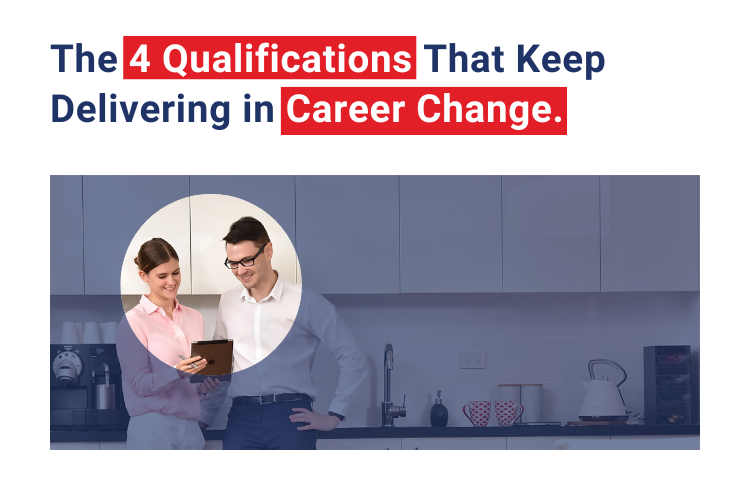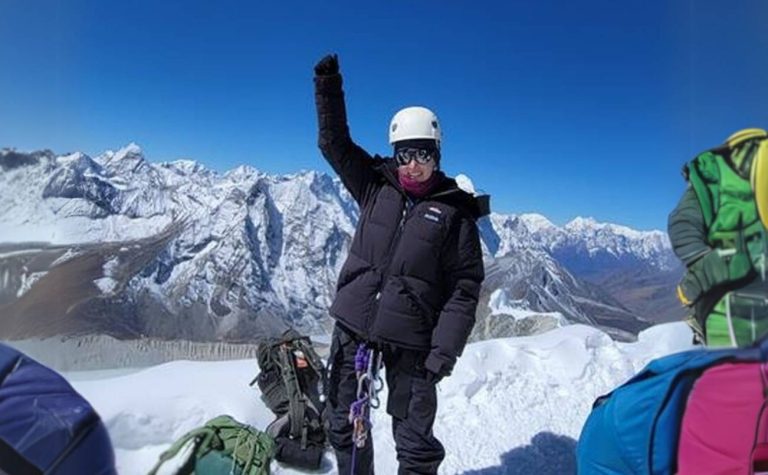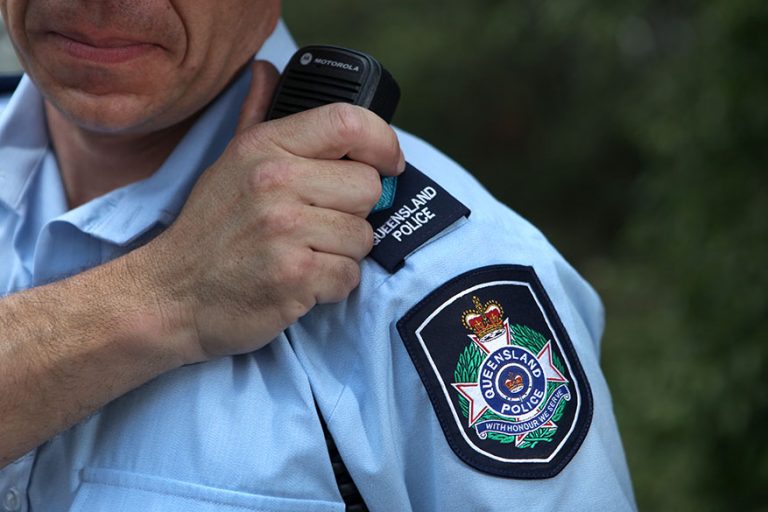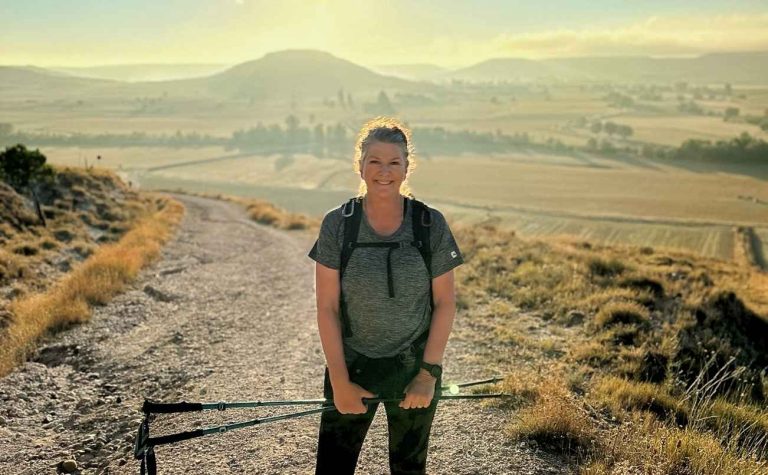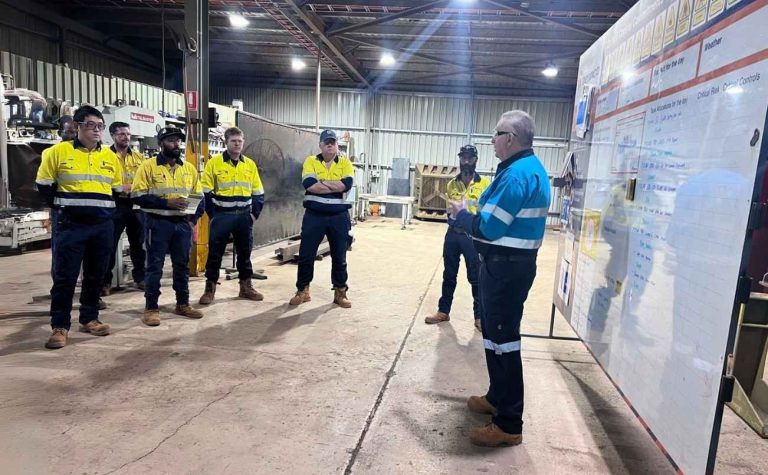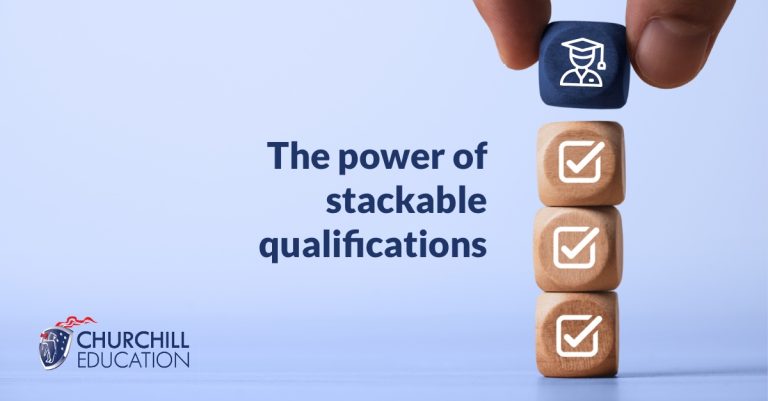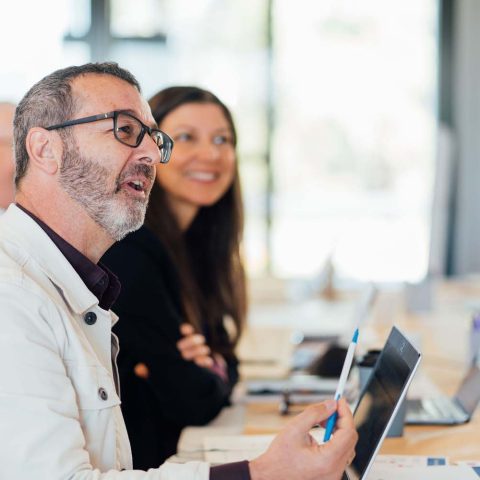In part one of our Success Goals series, Churchill Education Co-Founder Tricia Velthuizen discussed the importance of creating success goals for your life. In this article she shares how to turn those goals into reality – through what she calls a Life Plan.
There is a reason I believe that Bucket Lists are where dreams and ideas go to die.
That process of killing your dreams usually starts just like this…
(You’ve probably heard it yourself. You may have even said it.)
“I would love to do that … I’m going to put that on my Bucket List.”
Next time it gets mentioned, you will usually hear this … “oh yes, that one is on my Bucket List … one day I’ll get there.”
And then comes the sigh … you can hear it, can’t you? The sigh that says one day may never come and for many, it never does.
Between conversations and sighs, there is no action.
Find out what you’re eligible for
That is why I don’t believe in Bucket Lists. It’s like we think by saying it aloud we are taking some sort of action. But the truth is that saying it, well that is just a conversation we had once. It marks something that sounds interesting, appealing even. But it is not the language of true action.
Taking action is the heartbeat of living our goals … without it, there is no life.
That is why instead of Bucket Lists, I believe in Life Plans.
It’s not a list that focuses on stuff you want to scrape before you kick the bucket – it is a plan for how you want to live … starting now.
See the difference?
And this is how we get there.
Start with the End in Mind: Success Goals
Last time we chatted, we worked through writing your own Success Goals.
Success Goals are your destination.
A success goal is effectively your end goal. And nothing can begin if you don’t know where you want to go.
Back when I was a Crown Prosecutor, I learned that understanding the end goal was the most important part of preparing my case for presenting to the judge and jury.
Of course, in any trial, there has to be an opening address – the very first thing a judge and jury hear about this case. It is like a road map of what should unfold during the trial.
And then come the witnesses, all giving their account of what happened and bringing to life the pieces of the puzzle. Until finally, comes the closing arguments.
You have probably seen a courtroom drama at the movies or on the television. You would have seen the prosecutor addressing the jury, urging them to convict the accused who sits at the bar table. This is called the closing argument.
And it has to cover every piece of the evidence that is vital in convincing a jury that they should convict someone of a criminal charge.
This is the final persuasive moment that pulls the whole trial together and helps the jury reach a verdict. The verdict is the last stop in the trial – guilty or not guilty.
I always started by writing my closing address first.
My closing address was like writing a story of the whole trial that had come before that final speech. It was giving the jury the best mud map for confidently returning a guilty verdict.
The goal was always to hear that verdict of “Guilty” being uttered. And so I started with that end in mind.
The funny thing is that we use those same skills and with that same approach in projects in every workplace across Australia. In fact every project should begin with a clear end goal.
Whether it is eliminating three competing software programs to create one streamlined approach across the company (as we did a few years ago) or to connect one piece of land to another by building a bridge or a tunnel, every project needs a clear end goal.
And that is why you need to begin with those Success Goals at the ready.
Have you got your Success Goals ready now?
Not yet? Take some time to do that. You’ll find instructions and an explanatory video here.
Yes! Okay, let’s get started on mapping those across to a Life Plan.
How to Create a Life Plan from Churchill Education on Vimeo.
Creating your Life Plan: Bringing your Success Goals to Life
Okay, so making change is not something that most of us are particularly comfortable with – and make no mistake, we really do like to be comfortable.
Our brains are hardwired to save our energy and kick into automatic pilot. We like to do things the same way over and over. Think about it – you probably make your morning coffee in the same way, in the same cup, in the same order each day. We drive home from work, often the exact same route every day, to the point that sometimes we don’t even remember driving through parts of the journey – autopilot kicks in.
So, if we want to make changes to our lives and to reach our Success Goals, we are going to want to disrupt those comfortable patterns and get our brains onboard for recognising this new goal is important to us.
There is going to need to be something that inspires us to make change.
Hopefully, the Success Goals you have set make you feel excited about the life that you will be living when you fulfil them.
Or in my case, the fear of the life that awaits when you don’t fulfill them scares you enough to reach your goal. I’ll explain a little more about that fear that found me soon.
To reach our Success Goals, we need to take action early after we set our goals and the best way to take action is to document a plan.
Think about it: the projects at work, all captured in project management software. The school curriculum of what we want to teach kids, all documented. A house to be built, all laid out in plans and council approvals. A cake to be baked, a recipe to follow.
The documenting matters. And it isn’t just common sense, there are actual scientific studies that back me up. Your chances of achieving your goal get a 42% boost when you write them down.

Get Your Tools Ready
Grab yourself the recording tools that work best for you. For me, pen and paperwork best. In fact, I have a dedicated notebook that I picked up from Kmart and labelled. Everything goes in there, including our monthly progress reviews.
For Randall, he’s embraced OneNote and types out his plans and notes.
Other friends draw diagrams out on their tablets. It doesn’t matter where you record it – it just matters you have somewhere to record it.
Your Starting Position
You know where you want to go: your Success Goals.
You’ve got your tools ready to capture your plans to get there.
Now, you need to get honest with yourself: what is your starting position?
Let me give you some honest examples.
Getting honest with yourself
A couple of years ago, I received a phone call from a surgeon after I had a small procedure. Initially, I thought it was a routine call. Then with the pleasantries over, I heard some words that I wasn’t expecting:
“So, this is the reason for my call; I need to talk to you about the results that have come back from the lab.”
Her tone had shifted and the conversation that followed left me in no doubt that change was coming.
In short, I was grossly overweight, and the excess weight had put me on a collision course with a cancer I didn’t want to have. I had a window of opportunity to change course and it was presented to me plainly by my surgeon:
I either had to lose weight permanently or I would be back in her office for the worst of reasons and with a limited hope of it ending well.
With four children still to raise, my choice seemed pretty clear. I had to lose weight permanently.
Here’s the challenge though. It wasn’t a little bit of weight. It was a lot of weight. Pretty much a whole other person had to go – nearly 60 kilograms. And I had been carrying that weight around for about 10 years. I had tried Jenny Craig, Weight Watchers, Tony Ferguson’s shakes, Atkins Diet, the Gabriel Method, the Wesley Hospital program, dietician appointments, naturopaths … you get the idea. Always the same outcome followed. Lose some weight, put more back on.
Find out what you’re eligible forI had to get really honest with myself about where I was starting.
I was starting at 128 kilograms. I was starting with 10 solid years of weight management failure. I was starting with a whole stack of bad habits and a whole lot of desire to live.
That was my starting point.
Six months later, with my weight loss plan underway, I set another goal. I wanted to hike the Tour du Mont Blanc, one of the most famous Alps treks in the world. It involved a whole lot of hiking up and down mountains for around 8 hours a day over the course of a week.
And this was my starting point.
I couldn’t even walk the length of my driveway without getting out of breath. I hated all forms of exercise. I was the kid at primary school whose Phys Ed teacher would shake their head at the level of dizzying incoordination I displayed, and who skipped every PE class in high school. This was over 40 years of exercise aversion.
I was also the person who had learned to ride a bicycle for the first time at 40 so I could participate in an 800 kilometre charity bike ride in Thailand. I could do physically challenging things when the stakes were high enough.
That was my starting point.
Whatever the goal is, we have to take a good hard look at our starting point.
Whether it is the balance in your bank account, the number on the scales, the time we spend at work, the time we don’t spend with family, we need to get clear about where we are starting from before we launch into a plan.
Often, you will find there is a number associated with your honest starting place. And as the old saying goes, the numbers don’t lie.
Set your Direction
You know where you want to end up.
And you know where you are starting from.
Next you need to figure out what direction to take as you link up the start to the finish.
What are the activities you will need to do?
Who will you need on your team to pull this off?
What are the shifts you will need to make in your mindset or behaviours?
This is how these three things can come together in creating your Life Plan.
Remember earlier, I shared with you a goal I set in 2018 to trek the Tour du Mont Blanc? And my need to permanently lose weight?
When I realised I had to lose such a significant amount of weight, I spent a lot of time researching what approach I was going to take to achieve this. Ringing in my ears were my doctor’s words:
“I don’t care how you do it, but you need to lose all the weight and it needs to be permanent, none of this yoyo weight on and weight off.”
With a long history of yoyo dieting behind me, my research led me to decide I was going to have weight loss surgery – a gastric bypass. The data showed me that for people in my situation to permanently lose weight from such a large starting point, my chances of success sat around 5% on all other weight loss approaches. I wasn’t prepared to risk being part of the 95% this time. The stakes were too high. So, weight loss surgery was my decision.
But there was a Part Two to this decision. People can have weight loss surgery and still ultimately be unsuccessful in keeping the weight off. I decided to research what made the difference.
And a few key strategies for success became clear:
- I had to keep my weight within a 3-kilogram fluctuation window, taking action swiftly if my weight crept outside of this healthy range. I needed to work hard to reach my goal and then I needed to work at staying at my goal. Either way there was going to be work and it was work for my wellbeing.
- I needed to adopt a balanced approach to my food – a range of food that was healthy and recognised that life was for living. Gone were the days of food being labelled bad or good. Food was food for sustenance mostly and occasionally for celebration. Both could work together.
- Exercise had to become a permanent and enjoyable part of my life.
That is how I came to set a goal to trek Tour Du Mont Blanc. I was a non-exerciser. I couldn’t think of any exercise that I had consistently maintained, nor could I think of any exercise that I enjoyed. But for this to work and me to have the life I wanted to lead, I needed to come to a different way of living.
I reflected and thought about what did excite me. The idea of travel and being outdoors made for a good combination. And I had two legs that I had been using effectively to walk myself around for over 40 years so I was pretty confident that I could walk. It scared me enough to keep me focused on turning up for training – fear can be a very useful tool to harness in this way.
I reflected and thought about what did excite me. The idea of travel and being outdoors made for a good combination.
Hiking seemed like the obvious choice with one final kicker.
I had not been using my persistence muscles when it came to exercise at any stage in my life. I started. Then I gave it up; over and over again. In fact, I was very good at giving up.
So I needed a goal that frightened me enough that I would keep at exercising and I needed to have a further safeguard against giving up. I needed a public declaration to people I respected.
I signed on to the Tour Du Mont Blanc for the following year and I went to women I respected and asked if anyone wanted to come with me. I told people who were exercisers about my plans because I knew they would ask me about how I was going in my training. One friend came back and told me she was in, which was such a relief. I would have done it on my own but the idea of having a friend on the trek was an absolute bonus.
I had a destination; I had the start of my team. From there, I hunted down a local personal trainer who was a hiker and I told her about my goal: I needed to be trained to get to Mont Blanc. I needed to be fit enough to hike continuously for a week. And along the way, I still needed to lose another 40 kilograms. Would she help me and how should I begin?
Her first piece of training homework for me was simple – worryingly so. My homework was to walk for 5 minutes a day just up and down my driveway. When I could do that without getting out of breath, I could take it to 10 minutes a day.
In our sessions together, she started to build my body strength. There wasn’t really much in the way of sweating but there was a lot in the way of form, control and consistency. I was getting to know my body. And I had a plan.
Sometimes, I think we set a Success Goal and then when we start our action steps, we leap to wanting to perform at the level that would be required right at the end, when we are actually living our goal. But rarely are we ready for that level of performance, that level of energy, that level of knowledge or that level of persistence.
The truth is that if Leanne (my trainer) had taken me out for a 20-kilometre trek at the beginning of our training, I would have fallen in a big heap and I would likely never have returned to my goal. It would all have been too hard, too big for me.
When I questioned her about the approach she was taking, Leanne replied simply, “my job is to build you, not break you.”
And when it comes to working out your activities you need to do to reach your goal, the team you have on side, that is the best approach: find an approach that builds you up, not breaks you down.
I did the Tour Du Mont Blanc with not an injury in sight and with an unexpected ease. My body was strong enough to do every climb and descent, and my head was strong enough to soak up the whole experience. It was bloody magic!
Whatever your Success Goals, sit down and ask yourself these questions:
- What activities are necessary to be the person that has fulfilled this Success Goal?The answers to this question may be immediately obvious. You may know what you need to do – you may have a goal to find something for yourself to do each week that makes you happy. And it might be as simple as signing up to a class or group.But sometimes, you may not know the best way to get there. This is when you can make research to your friend. The internet is a marvel of information (and in some cases, misinformation).There will be people who have tackled the same type of Success Goal as you have set for yourself and chances are, they are happy to share their knowledge.They may have written a book that you can read on the topic (or an audio version that can help you learn as you drive) or shared during a podcast or a video.If your Success Goals have a financial component, you would be hard-pressed to find a better action plan than that set out by Scott Pape in “The Barefoot Investor“. The only thing Scott is going to sell you is his book, a whole lot of common sense and a great financial education – all of which you can pick that up for $19.00 from Big W.Randall and I switched over to the Barefoot Investor approach in 2019 and it has been the best financial decision we have made in our twenty years together. We have a level of ownership in our financial Success Goals that makes us feel confident and educated.Find people to have conversations with, even if they aren’t in the room, and then listen and learn, my friend. Listen and learn.This brings us to the second question to ask yourself.
- Who will you recruit onto your team to reach your Success Goal?Few of us achieve a goal without the help of other people. Even better, sharing an achievement with others feels good. We are designed to belong to families, communities, teams.Other people can enhance our prospects of reaching our goals – and some people can detract from our chances of realising our goals.You need to work out who you are going to recruit onto your team and what will they bring?When I decided to trek the Tour Du Mont Blanc, I went looking for a specific type of personal trainer with two key qualities – one who didn’t think her job was done when I was vomiting in a corner (been there, done that) and one who was a hiker herself.When I decided to travel with our children each year on our Early Retirement Success Goal, I talked to families who had wonderful and practical tales of travelling with their children – not the people who told me horror stories of screaming children on flights.When we were establishing Churchill Education, we found business education groups and mentors with more experience than us who were willing to share their knowledge – and had a measure of accountability.When Randall was wanting to permanently kick Post-Traumatic Stress Disorder’s arse and reach his Health Success Goal, we found someone who had done just that to ask her how she had got through it.And in each case, we found something else – that person we found they had some other person or resource to introduce us to that helped us reach our goal. For Randall, it meant that he got an introduction to an outstanding psychiatrist, Dr Andrew Khoo, who has been instrumental in helping Randall achieve his goal.As well as coaches (or trainers, or educators or whatever their title may be), our teams also thrive with cheer squads on our side.Tell people who care about you what you care about. Tell them about your success goals and tell them about your progress along the way, the triumphs and the challenges. Give them permission to be your encourager and your conscience.I have a group of women in my life that I share my Success Goals with – even when I feel a little embarrassed at times because it may seem too small to say out loud or too big to attempt and fail. These are people who will always encourage me and check in to ask me how it is going. They offer a level of support and accountability that stays in my mind even when I may not feel like sticking at my plan.
- What are the shifts you will need to make in your mindset or behaviours?The reality is that a Success Goal is going to involve change.Change requires just that: change.Some people will throw their hands in the air, wave them about and declare, “I love change.”Pfft.We only like change we are comfortable with; change that makes us uncomfortable is not first on our preferred list of things to do.Change is inherently going to make us uncomfortable in requiring different mindsets and different behaviours from us.And it is going to require strength from us when many times we have been persistently weak in that very same area.It is important to get honest with ourselves at this point.Let’s face it: I didn’t reach 128 kilograms because I was great at prioritising my health. Randall didn’t develop PTSD overnight. There were moments along the way when he could have sought help, had a debrief, been open about what he was feeling or experiencing.There were some pretty entrenched behaviours that took significant shifts and a long time to overcome.The starting point will always be honesty. What behaviours and mindsets must change?
We can get the activities in a bullet-pointed list.
We can assemble a cracking team of experts and support crew.
And ultimately, we are still going to need to lead ourselves in a different way than we have done before.
When we start with honesty, we can prepare an “If This, then That” plan.
I had 40 something years of detesting exercise. It was going to take a lot to reach the stage I find myself in today – I love to hike. I consider myself a hiker. I want to hike every year of my life until my bones lay down and can hike no more. I hope that is when death comes. I have also grown to truly enjoy strength training. I am a Lady who Lifts. I have developed an appreciation for my muscles.
But when I started on this Success Goal to hike the Tour du Mont Blanc, I loathed exercise and I had a long list of handy excuses at the ready to avoid it on any given day.
My mindset required a significant change. My behaviours required an alternative path.
So, I told myself that I could internally say I didn’t want to train today, but I could never complain out loud. I told myself that I only had to do the next five minutes or reach the next tree – and if at that point I wanted out, we had a deal. I told myself that turning up mattered more than anything else. I told my internal chatter to just Shut Up at times and instead I listened to someone else’s conversation on a podcast. I told myself I could. And then I would.
To help this process along, I got my brain onside.
You see, our brains can be our biggest asset as well as our greatest liability. We just need to work out how to get them onside.
When our brains are trying to protect us, from discomfort, potential embarrassment, well, they are just operating in an ancient mode – keeping us safe from harm and safe from being excluded from the tribe.
But when our brains work out something is important to us, they become like a heat-seeking missile – intent on focusing in on the target.
We’ve all experienced it.
We’ve ignored a little whisper in our guts we should say something or do something because “what would people think” – and then regretted it later.
And we have been on the heat-seeking missile side too.
When I was pregnant with twins, all I kept seeing were twins, at the shops, at school, in articles, on the internet. I never knew the world had so many twins.
Heat-seeking missile.
When my husband decided to buy a particular car to accommodate those twins and our two other children, all we kept seeing on the road was that Kia Grand Carnival.
Heat-seeking missile.
When we let our brains know something is important to us, this part of our brains called the Reticular Activating System gets a sharp wake up call and goes into full alert for us. I like to think of it like Radar from that television series, MASH – the only who always knew when the choppers were coming before anyone else and would call loudly, “Incoming!”.
It’s a superpower in our brain and we can make it work for us.
One way of doing that is to set your Success Goal, get your list of activities sorted, get your team onboard and then record all of it and put it somewhere prominent.
Write your Success Goals and Life Plan – the full action plan – down somewhere.
I don’t care if it is in a book, on a computer or an iPad. Get that stuff recorded. And then get it displayed and look at it regularly.
I put our Success Goals on a big piece of cardboard, in a frame on our bedroom wall.
Once a month, I sit down with Randall, pull out our Dreams, Goals & Plans notebook and we hold a meeting to see how we are going.
We run an inventory – doing that, check; not doing that, action required!
We tell ourselves and our brains: this is important! We tell our children and people we trust how we are tracking.
We get our superpowered brains all fired up to keep chasing those Success Goals: Incoming!
But What if We Don’t Make It?
Isn’t it funny: when setting our Success Goals and drafting our Life Plan, we never stop to ask ourselves – what happens when we make it?
But we are pretty quick to ask ourselves – but what if we don’t make it?
It’s not just a question we ask ourselves – it is also the question we get asked by others.
Along with this cracking question – “Ah, but you never know what is going to happen next in life so how can you possibly plan for it?”
Find out what you’re eligible forAnd they are right. Life is full of uncertainty. And failure. Both are guaranteed.
As well as a possibility.
We all have a choice: we can set our minds focused on some Success Goals that make us feel that spark of life. Or we can just sit and wait and see what may show up.
I think Jim Rohn had it right when he said,
“If you don’t design your own life plan, chances are you’ll fall into someone else’s plan. And guess what they have planned for you? Not much.”
I’ll choose designing my own life every time and be ready to deal with whatever else shows up along the way.
I’ll choose living my Success Goals and sharing the experience with the people I love most.
I’ll choose to wonder: “but what if we do make it?”
And I’ll choose possibilities.
I hope you do too.
Tricia Velthuizen

